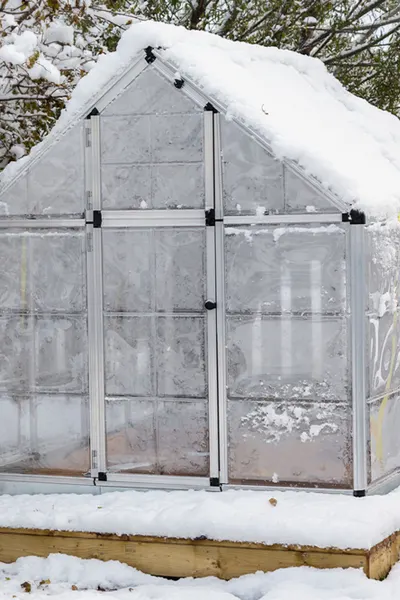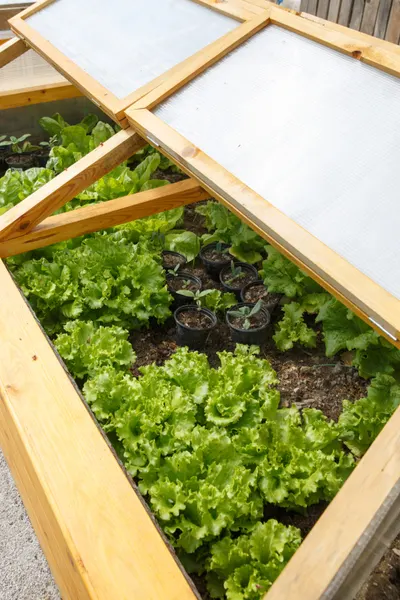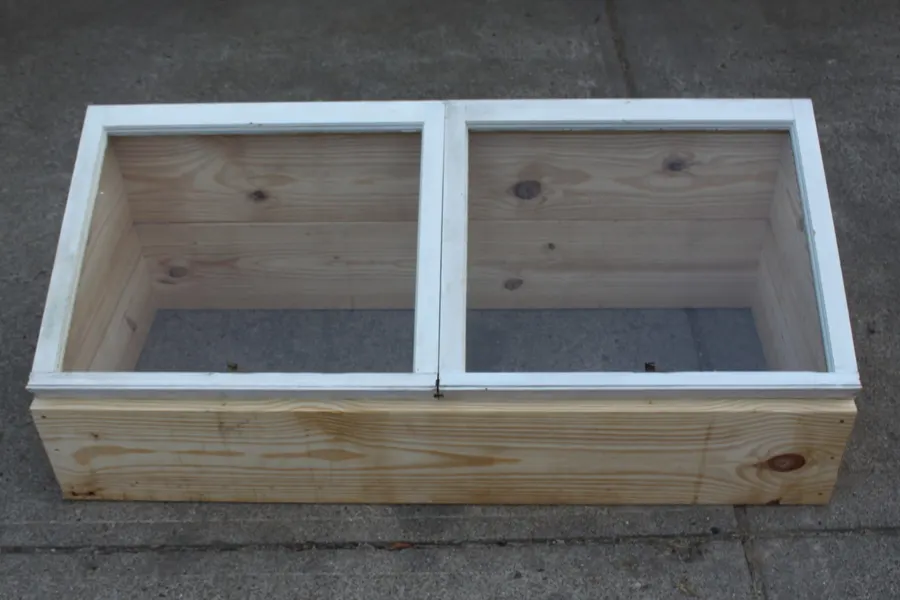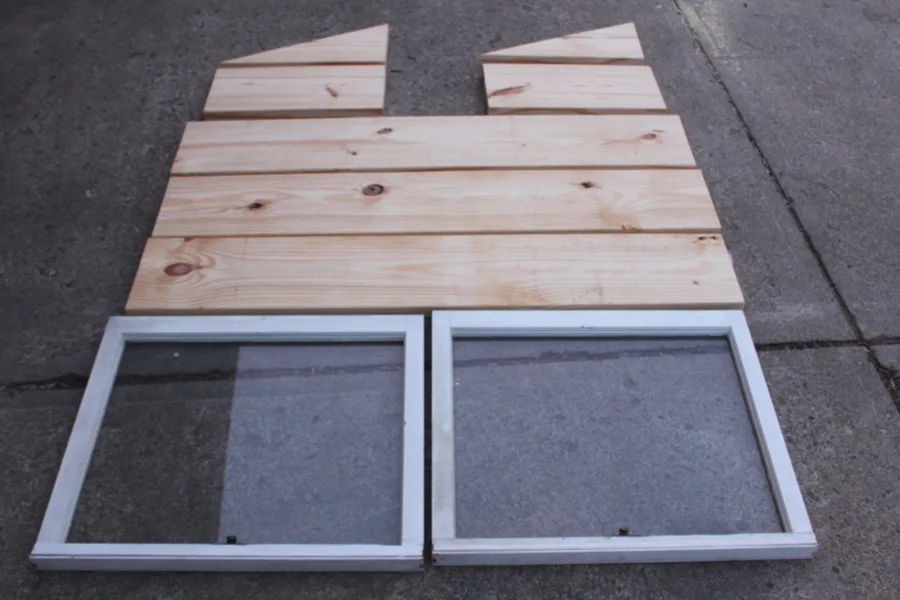With a simple cold frame, you can extend your growing season well into late fall. And, as an added bonus, begin growing crops earlier in the spring as well.
In fact, depending on where you live, you might just be able to grow fresh vegetables all winter long.
But perhaps best of all, it doesn’t take a lot of time or money to build your own!

Here is a look at a few of the basics to growing in cold frames, and how to easily create your own easily from inexpensive materials.
Cold Frame Basics
Cold frames work by trapping the sun’s rays in an enclosed space to warm the soil. Using a transparent cover of glass or plastic, the rays fill the space with light and warmth.
It seems almost too good to be true, but it can be 25 degrees with 6 inches of snow outside of a cold frame, and thriving salad crops growing beautifully inside! (See : How To Grow Using Cold Frames )
Cold Frame Covers
Covers need to be placed at an angle between 15 and 35 degrees to best capture the sun’s rays. The sides of a cold frame then insulate the soil and plants inside from the cold temperatures outside.

On extremely cold days and nights, cold frames can be completely shut to keep the warmth in.
And on warmer ones, they can be propped up, or opened up completely to keep from overheating plants.
Choosing The Right Location
The key for success when growing in cold frames all starts with selecting a good location.
Not only should the space receive plenty of light, but it needs to be protected from harsh winds and weather as well.

At minimum, plants need to receive at least 6 to 8 hours of sunlight in order to warm the soil and air inside of the frames. And, of course, to allow the plants to grow as well.
For this, a southern facing frame will usually work best. It gives the best opportunity for maximum sunlight.
Creating A Simple Cold Frame
Growing frames don’t have to be fancy, or made with expensive materials to perform well.
Outer frames can be constructed from materials as basic as a few straw bales placed together, or wood and metal. Even soil can be mounded up to create earthen sides that help to retain heat.
For the cover, the most important factor is that it needs to allow as much light through as possible, all while keeping air out.

Plastic, glass, and even plexiglass can all be used with great success.
No matter what you use as a material to create your cold frame, digging the finished structure down into the earth aids greatly in helping to insulate the growing medium and regulate temperatures.
In fact, digging frames into the earth as little as 6 to 12 inches can keep soil warmer by as much as 10 to 15 degrees.
A Simple Wood / Window Growing Frame
One of the easiest methods to construct a growing frame is from untreated framing lumber and a few old windows. See : How To Build A Simple Cold Frame From Lumber & Old Windows
Recycled window frames make the perfect covering for a growing frame. And, to boot, they are usually fairly easy to find.

For that, local Habitat For Humanity Re-Stores or local salvage shops are great places to look for usable materials.
In addition, stacked straw bales can work in much the same fashion, by placing windows or plastic on top of old bales.
Here is to extending your growing season this year!

This Is My Garden is a website dedicated to spreading the love and knowledge of gardening around the world. We publish two new garden articles each week. This article may contain affiliate links.
